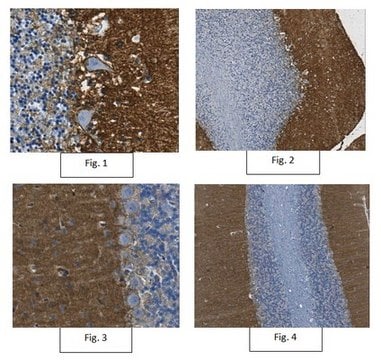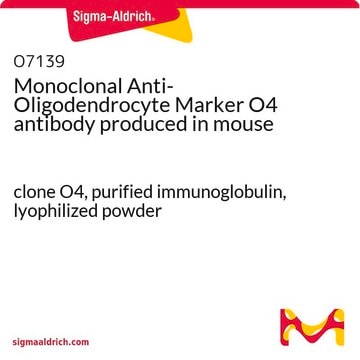MAB2262
Anti-Excitatory amino acid transporter 2 Antibody, clone G6
clone G6, from mouse
동의어(들):
Glutamate/aspartate transporter II, Sodium-dependent glutamate/aspartate transporter 2, Solute carrier family 1 member 2, excitatory amino acid transporter 2, excitotoxic amino acid transporter 2, glial high affinity glutamate transporter, solute carrier
About This Item
추천 제품
생물학적 소스
mouse
Quality Level
항체 형태
purified immunoglobulin
항체 생산 유형
primary antibodies
클론
G6, monoclonal
종 반응성
mouse, human
종 반응성(상동성에 의해 예측)
rat (100% immunogen homology)
기술
immunocytochemistry: suitable
immunohistochemistry: suitable
western blot: suitable
동형
IgG1κ
NCBI 수납 번호
UniProt 수납 번호
배송 상태
wet ice
타겟 번역 후 변형
unmodified
유전자 정보
human ... SLC1A2(6506)
일반 설명
특이성
면역원
애플리케이션
Neuroscience
Signaling Neuroscience
품질
Western Blot Analysis: 0.5 µg/ml of this antibody detected Excitatory amino acid transporter 2 on 10 µg of mouse brain tissue lysate.
표적 설명
물리적 형태
저장 및 안정성
분석 메모
Mouse brain tissue lysate
면책조항
Not finding the right product?
Try our 제품 선택기 도구.
Storage Class Code
12 - Non Combustible Liquids
WGK
WGK 1
Flash Point (°F)
Not applicable
Flash Point (°C)
Not applicable
시험 성적서(COA)
제품의 로트/배치 번호를 입력하여 시험 성적서(COA)을 검색하십시오. 로트 및 배치 번호는 제품 라벨에 있는 ‘로트’ 또는 ‘배치’라는 용어 뒤에서 찾을 수 있습니다.
자사의 과학자팀은 생명 과학, 재료 과학, 화학 합성, 크로마토그래피, 분석 및 기타 많은 영역을 포함한 모든 과학 분야에 경험이 있습니다..
고객지원팀으로 연락바랍니다.








